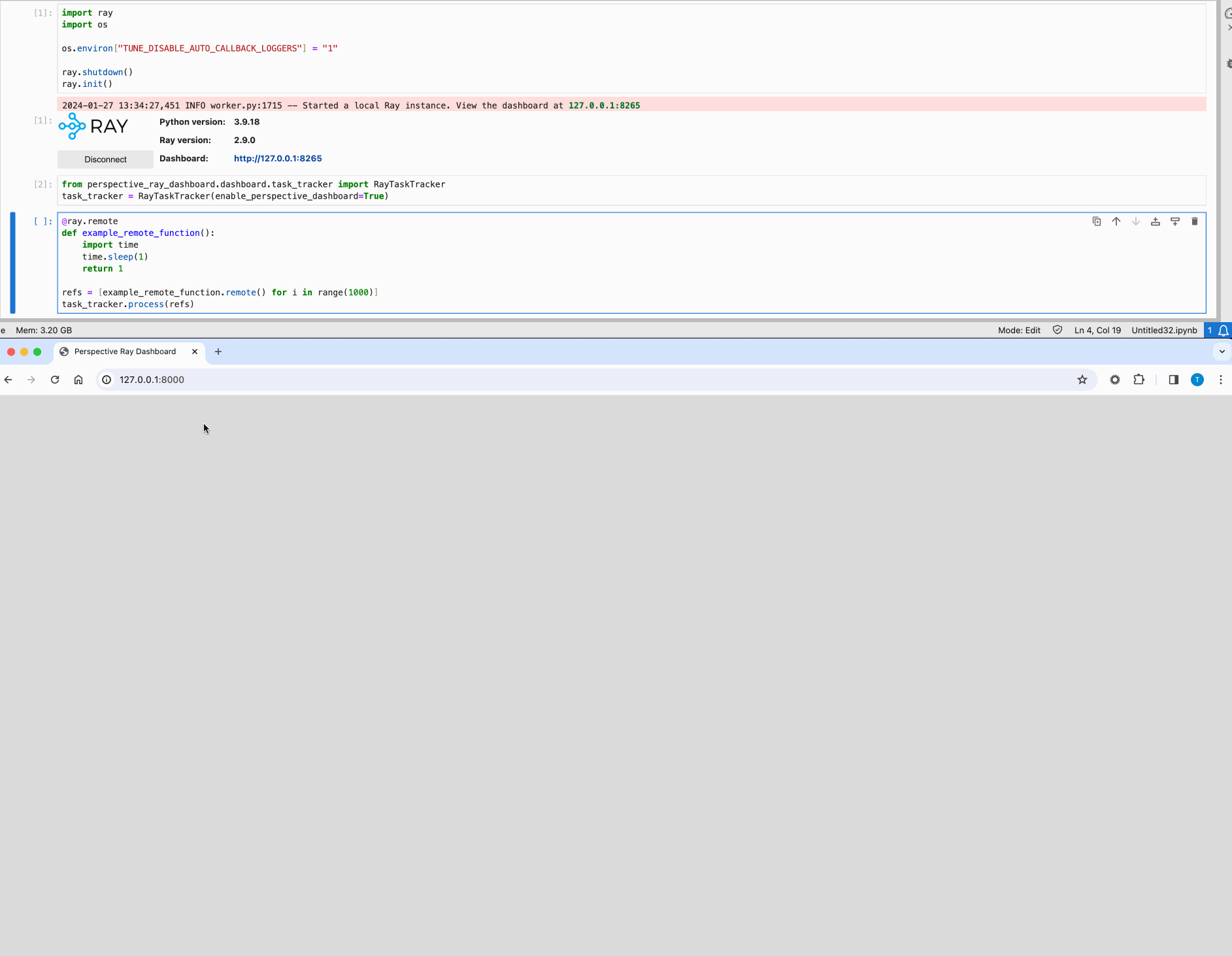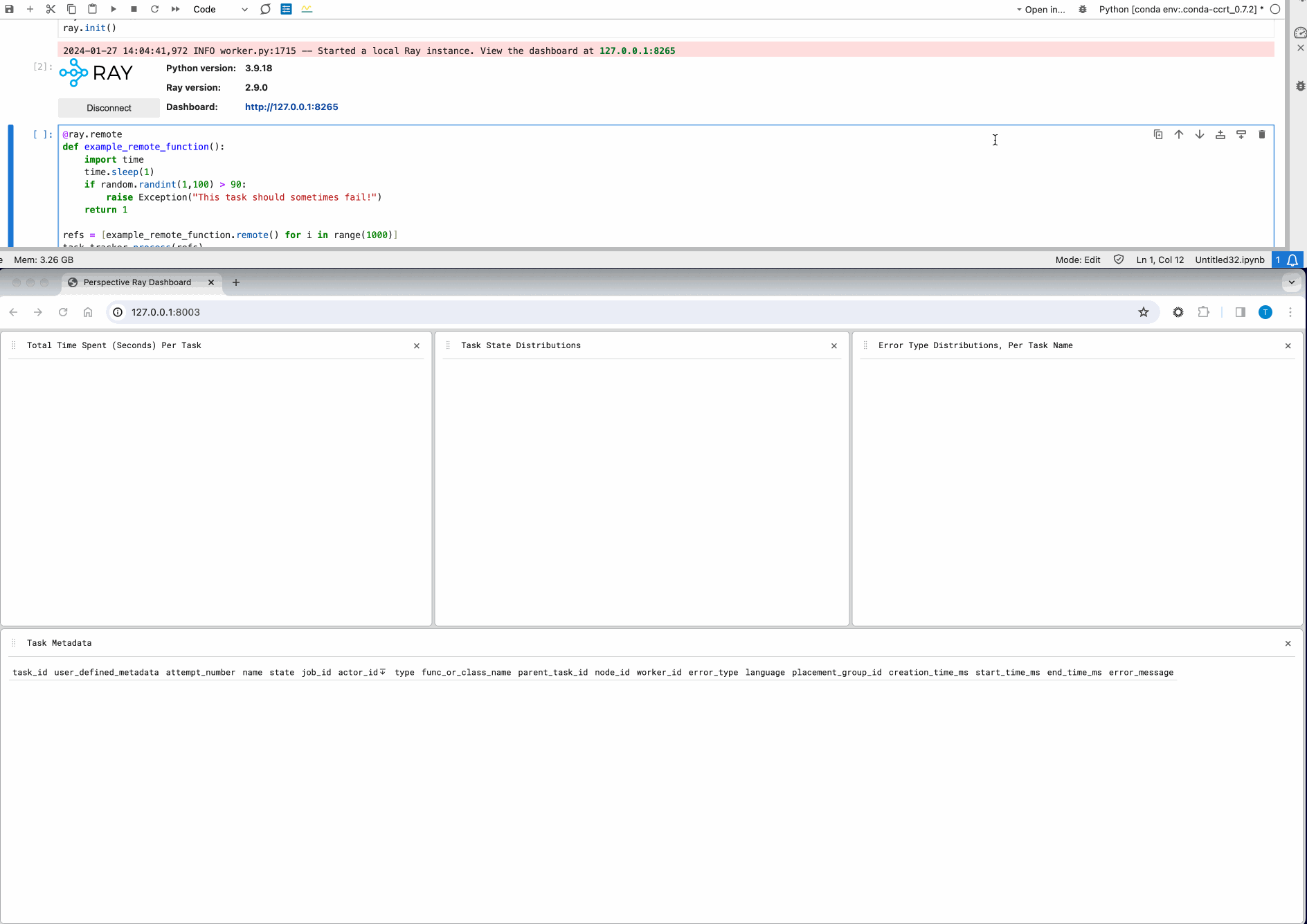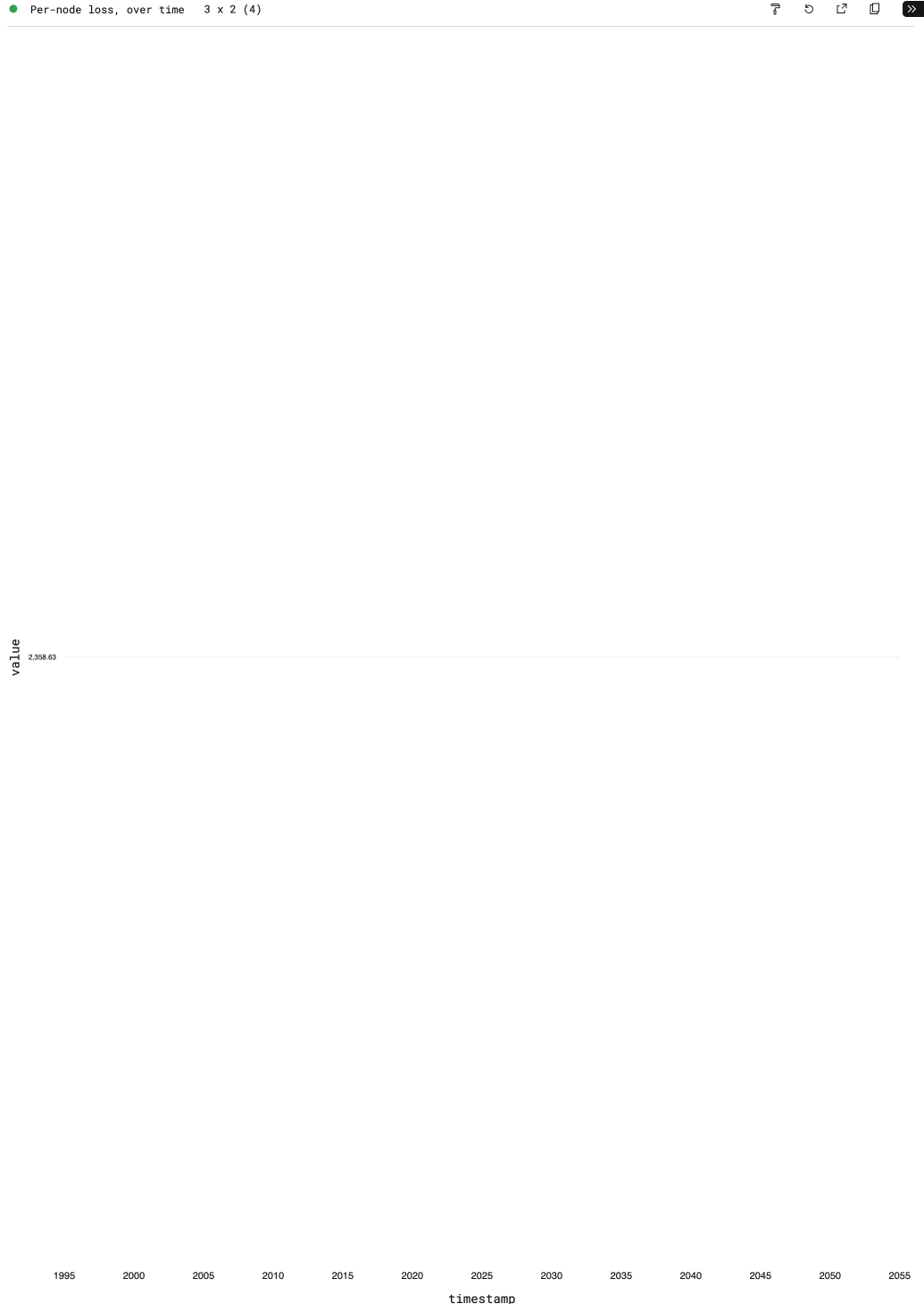-
Notifications
You must be signed in to change notification settings - Fork 3
Key Features
The raydar module provides an actor which can process collections of ray object references on your behalf, and can serve a perspective dashboard in which to visualize that data.
from raydar import RayTaskTracker
task_tracker = RayTaskTracker()Passing collections of object references to this actor's process method causes those references to be tracked in an internal polars dataframe, as they finish running.
@ray.remote
def example_remote_function():
import time
import random
time.sleep(1)
if random.randint(1,100) > 90:
raise Exception("This task should sometimes fail!")
return True
refs = [example_remote_function.remote() for _ in range(100)]
task_tracker.process(refs)This internal dataframe can be accessed via the .get_df() method.
| task_id | user_defined_metadata | attempt_number | name | ... | start_time_ms | end_time_ms | task_log_info | error_message |
|---|---|---|---|---|---|---|---|---|
str |
f32 |
i64 |
str |
datetime[ms,America/New_York] |
datetime[ms,America/New_York] |
struct[6] |
str |
|
| 16310a0f0a... | null |
0 | example_remote_function |
... | 2024-01-29 07:17:09.340 EST | 2024-01-29 07:17:12.115 EST | {"/tmp/ray/session_2024-01-29_07... |
null |
| c2668a65bd... | null |
0 | example_remote_function |
... | 2024-01-29 07:17:09.341 EST | 2024-01-29 07:17:12.107 EST | {"/tmp/ray/session_2024-01-29_07... |
null |
| 32d950ec0c... | null |
0 | example_remote_function |
... | 2024-01-29 07:17:09.342 EST | 2024-01-29 07:17:12.115 EST | {"/tmp/ray/session_2024-01-29_07... |
null |
| e0dc174c83... | null |
0 | example_remote_function |
... | 2024-01-29 07:17:09.343 EST | 2024-01-29 07:17:12.115 EST | {"/tmp/ray/session_2024-01-29_07... |
null |
| f4402ec78d... | null |
0 | example_remote_function |
... | 2024-01-29 07:17:09.343 EST | 2024-01-29 07:17:12.115 EST | {"/tmp/ray/session_2024-01-29_07... |
null |
Additionally, setting the enable_perspective_dashboard flag to True in the RayTaskTracker's construction serves a perspective dashboard with live views of your completed references.
task_tracker = RayTaskTracker(enable_perspective_dashboard=True)
From the developer console, save your workspace layout locally.
let workspace = document.getElementById("perspective-workspace");
// Save the current layout
workspace.save().then((config) => {
// Convert the configuration object to a JSON string
let json = JSON.stringify(config);
// Create a Blob object from the JSON string
let blob = new Blob([json], { type: "application/json" });
// Create a download link
let link = document.createElement("a");
link.href = URL.createObjectURL(blob);
link.download = "workspace.json";
// Append the link to the document body and click it to start the download
document.body.appendChild(link);
link.click();
document.body.removeChild(link);
});Then, move this json file to js/src/layouts/default.json.

The data available to you includes much of what Ray's GCS tracks, and also allows for user defined metadata per task.
Specifically, tracked fields include:
task_iduser_defined_metadataattempt_numbernamestatejob_idactor_idtypefunc_or_class_nameparent_task_idnode_idworker_iderror_typelanguagerequired_resourcesruntime_env_infoplacement_group_ideventsprofiling_datacreation_time_msstart_time_msend_time_mstask_log_infoerror_message

The proxy server helpd by the RayTaskTracker is exposed via the .proxy_server() property, meaning we can create new tables as follows:
task_tracker = RayTaskTracker(enable_perspective_dashboard=True)
proxy_server = task_tracker.proxy_server()
proxy_server.remote(
"new",
"metrics_table",
{
"node_id": "str",
"metric_name": "str",
"value": "float",
"timestamp": "datetime",
},
)If a user were to then update this table with data coming from, for example, a pytorch model training loop with metrics:
def my_model_training_loop()
for epoch in range(num_epochs):
# ... my training code here ...
data = dict(
node_id=ray.get_runtime_context().get_node_id(),
metric_name="loss",
value=loss.item(),
timestamp=time.time(),
)
proxy_server.remote("update", "metrics_table", [data])Then they can expose a live view at per-node loss metrics across our model training process:

This wiki is autogenerated. To made updates, open a PR against the original source file in docs/wiki.
Get Started
References
Developer Guide